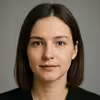3 Minutes
Why Passkeys Are Essential for Modern Cybersecurity
As artificial intelligence rapidly transforms the digital threat landscape, tech giants like Google and Microsoft are urging users to rethink their online security. Their message is clear: traditional passwords are increasingly vulnerable, and it's time to embrace phishing-resistant passkeys for safeguarding your most sensitive accounts.
What Are Passkeys? Understanding the Next Generation of Digital Credentials
Passkeys represent a breakthrough in user authentication, providing a passwordless entry into your favorite apps and websites. Instead of entering a username and password, you access your account using the same secure methods you already rely on to unlock your device. Popular passkey methods include:
- Biometrics: Authenticate instantly with a fingerprint or facial recognition, leveraging technologies such as Face ID, Touch ID, Windows Hello, and Android Fingerprint/Face Unlock.
- PIN or Pattern: Use your device's PIN code or lock screen pattern for quick and secure account access.
This innovative approach means there are no passwords to steal, phish, or reuse—making passkeys inherently immune to the most common types of online attacks.
How Passkeys Outperform Traditional Passwords and Two-Factor Authentication
Enhanced Protection Against Phishing Attacks
Passkeys eliminate the need for both passwords and conventional two-factor authentication (2FA) codes, removing opportunities for hackers to intercept or trick users out of sensitive credentials. Leading cybersecurity publications highlight how the phishing-resistance of passkeys is especially crucial in the current era, as cybercriminals continue to develop new AI-driven attack tools.
AI-Powered Threats: The Case for Stronger Authentication
Recent research from identity and access management (IAM) leader Okta reveals that cybercriminals are leveraging AI tools like Vercel’s v0.dev to generate highly convincing phishing websites with just a text prompt. These platforms empower attackers to quickly clone legitimate sign-in pages for trusted brands—such as Microsoft 365 and major cryptocurrency firms—making fake websites nearly indistinguishable from the real thing.
Okta’s Threat Intelligence team has observed threat actors hosting dozens of sophisticated phishing sites on Vercel in real time. The use of AI eliminates common warning signs, such as spelling errors and poor design, making phishing attacks harder to detect than ever.
Passkeys vs. Passwords and Two-Factor Authentication: Feature Comparison
| Feature | Passwords | 2FA | Passkeys |
|---|---|---|---|
| Susceptible to Phishing | Yes | Yes | No |
| User Convenience | Low (memorization required) | Medium (extra steps) | High (biometric/PIN unlock) |
| AI Phishing Protection | No | Limited | Yes |
| Reuse Risk | High | Varies | Minimal |
How to Upgrade Your Security with Passkeys
If passkeys are supported on your accounts, experts recommend enabling them immediately and avoiding password-based logins whenever possible. For accounts that don't yet support passkeys, be sure to use unique, complex passwords, paired with non-SMS 2FA (such as an authenticator app or hardware security key) for added safety.
Use Cases and Market Relevance
Passkeys are already available on major platforms including Google, Microsoft, Apple, and a growing number of financial and enterprise services. This widespread adoption signals a major shift in the cybersecurity market—one where user convenience and robust protection against sophisticated threats go hand in hand.
Conclusion: Stay One Step Ahead of AI-Driven Threats
With cybercriminals harnessing AI to launch more effective and convincing phishing campaigns, relying on passwords and basic 2FA simply isn’t enough. By transitioning to passkeys, individuals and organizations can enjoy seamless, frictionless logins—while keeping accounts safe from the most advanced attacks.
Now is the time to future-proof your digital identity. Embrace passkeys for every eligible account and upgrade your security toolkit to withstand the evolving threat landscape.
Source: phonearena



Comments